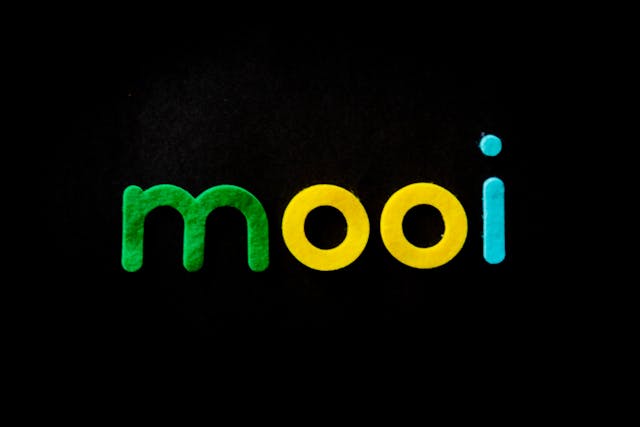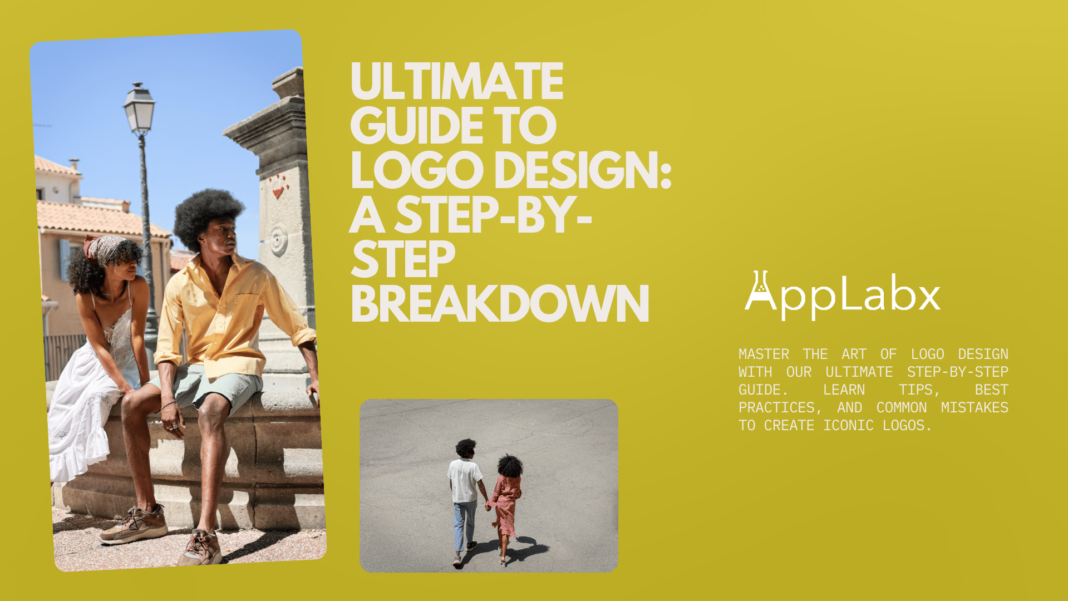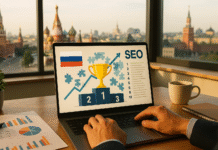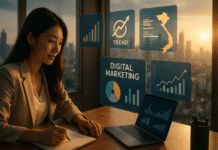Key Takeaways
- Master the Logo Design Process: Follow a clear, step-by-step guide from brainstorming and research to finalizing a professional logo that aligns with your brand’s identity.
- Avoid Common Pitfalls: Learn to sidestep mistakes like overcomplicated designs, poor scalability, and ignoring audience preferences to create a logo that resonates.
- Apply Best Practices: Focus on simplicity, versatility, and timeless design principles to craft memorable and impactful logos, backed by real-world examples.
A logo is much more than a graphic symbol; it is the face of your brand, the first impression you leave on your audience, and often the deciding factor in how customers perceive your business. In a world where competition is fierce and attention spans are short, a well-designed logo can make or break your brand’s ability to stand out. Whether you’re launching a startup, refreshing your existing brand, or simply exploring the creative world of logo design, understanding how to craft the perfect logo is essential.

This Ultimate Guide to Logo Design is here to help you navigate the complex yet exciting process of creating a logo that truly represents your brand. From understanding the foundational elements of logo design to mastering advanced techniques, this guide covers it all. Whether you’re a seasoned designer looking for a structured approach or a complete beginner eager to learn, this step-by-step breakdown offers practical advice, actionable tips, and insights drawn from the world’s most successful logos.
Why is a Logo Important?
Imagine walking into a bookstore. You might not know every title or author, but the visual elements of book covers—colors, fonts, and graphics—immediately influence your choices. Similarly, a logo serves as a visual shorthand for your business. Studies show that consumers form an opinion about a brand within the first 10 seconds of seeing its logo. That’s how powerful and impactful a logo can be.
Here are some key reasons why a logo matters:
- Brand Recognition: A memorable logo ensures customers recognize and recall your brand quickly. Think of the golden arches of McDonald’s or the swoosh of Nike.
- Professionalism: A polished logo conveys trust and reliability, showing customers that you mean business.
- Brand Identity: Your logo is a key component of your brand’s identity, working alongside colors, fonts, and imagery to tell your story.
- Competitive Edge: In saturated markets, a unique logo helps you stand out and leave a lasting impression.
What Will This Guide Teach You?
Designing a logo might seem intimidating, but it doesn’t have to be. This guide is structured to provide clarity, inspiration, and tools to simplify the process. Here’s what you’ll learn:
- The Fundamentals of Logo Design: What makes a great logo, the different types of logos, and how to choose the right style for your brand.
- A Step-by-Step Logo Creation Process: From brainstorming ideas to finalizing your design, we’ll walk you through each phase in detail.
- Expert Tips and Best Practices: Discover proven strategies to make your logo timeless, versatile, and memorable.
- Avoiding Common Pitfalls: Learn about the mistakes that can derail your logo design and how to sidestep them.
- Resources and Tools: Explore software, design platforms, and learning materials that make logo creation easier and more efficient.
Who Is This Guide For?
Whether you’re an entrepreneur, a graphic designer, or someone with no design background, this guide is tailored for you. Here’s how it can help:
- Business Owners: Craft a logo that aligns with your brand’s mission and attracts your ideal customers.
- Design Professionals: Enhance your skills and refine your workflow with new strategies and tips.
- Beginners: Learn the fundamentals of logo design and create a professional-looking logo with confidence.
The Impact of Great Logo Design
Real-world examples of iconic logos underscore the value of thoughtful design. For instance, FedEx’s logo cleverly incorporates a hidden arrow in its typography to represent speed and efficiency. Apple’s logo, a simple bitten apple, reflects the brand’s innovation and elegance. These logos are not just visually appealing; they encapsulate their brand’s story, values, and vision.
By the end of this guide, you’ll not only understand what makes these logos successful but also gain the skills and confidence to create a logo that leaves a lasting impression on your audience.
So, whether you’re starting from scratch or looking to revamp your existing logo, let’s dive into the exciting world of logo design. With this ultimate guide, you’re just a few steps away from creating a logo that captures the essence of your brand and sets you apart in a competitive market.
Before we venture further, we like to share who we are and our digital experiences.
About AppLabx
From developing a solid marketing plan to creating compelling content, optimizing for search engines, leveraging social media, and utilizing paid advertising, AppLabx offers a comprehensive suite of digital marketing services designed to drive growth and profitability for your business.
AppLabx is well known for helping companies and startups use Logo Design to drive traffic to their websites and web apps.
At AppLabx, we understand that no two businesses are alike.
That’s why we take a personalized approach to every project, working closely with our clients to understand their unique needs and goals, and developing customized strategies to help them achieve success.
If you need a digital consultation, then send in an inquiry here.
Ultimate Guide to Logo Design: A Step-by-Step Breakdown
- What is Logo Design?
- Step-by-Step Guide to Logo Design
- Best Practices for Effective Logo Design
- Common Mistakes to Avoid in Logo Design
1. What is Logo Design?

Logo design is the process of creating a visual symbol that represents a brand, company, or individual. A logo serves as the face of an organization, embodying its identity, values, and mission in a simple, memorable, and impactful design. Effective logo design combines creativity, strategy, and technical skills to communicate a message and evoke specific emotions.
In this section, we’ll explore the definition, purpose, and types of logos, and why they are essential for any brand.
Definition and Purpose of Logo Design
Definition
- A logo is a visual identifier consisting of text, symbols, or a combination of both.
- It is used to differentiate a brand from competitors and create a unique presence in the market.
- Logos are designed to be simple, versatile, and instantly recognizable.
Purpose of a Logo
- Brand Recognition: Helps customers quickly recognize your business.
- Example: The golden arches of McDonald’s are recognizable even without the name.
- Visual Identity: Establishes a consistent image across platforms and materials.
- Example: Nike’s swoosh is found on shoes, advertisements, and social media posts.
- Emotional Connection: Evokes feelings that align with the brand’s values.
- Example: Coca-Cola’s red-and-white script logo inspires nostalgia and happiness.
- Professionalism: A well-designed logo signals credibility and reliability.
Types of Logos
Logos come in various forms, each suited for different brands and purposes. Understanding the types of logos helps in choosing the right style for a brand.
1. Wordmarks (Logotypes)
- Definition: A text-based logo that focuses on the brand name in a distinct font or style.
- Key Traits: Simple, clear, and versatile.
- Examples:
- Google: Clean typography conveys simplicity and accessibility.
- Coca-Cola: Elegant cursive reflects tradition and warmth.
2. Lettermarks (Monograms)
- Definition: A logo made up of initials or abbreviations.
- Key Traits: Ideal for brands with long names or established recognition.
- Examples:
- IBM: Bold, geometric letters symbolize innovation and reliability.
- HBO: Compact and effective for digital platforms.
3. Icons or Symbols
- Definition: A graphical representation of the brand without text.
- Key Traits: Requires strong brand recognition to stand alone.
- Examples:
- Apple: Represents innovation and simplicity.
- Twitter: The bird symbolizes communication and freedom.
4. Combination Marks
- Definition: A blend of text and a symbol or icon.
- Key Traits: Versatile and visually engaging.
- Examples:
- Adidas: Iconic three stripes combined with the brand name.
- Burger King: Text within a symbolic hamburger shape.
5. Emblems
- Definition: A design where text is enclosed within a symbol or icon.
- Key Traits: Traditional and detailed, often used by universities or sports teams.
- Examples:
- Starbucks: The mermaid emblem evokes a sense of luxury and tradition.
- Harley-Davidson: A shield design conveys strength and heritage.
Why Logo Design Matters
A thoughtfully designed logo is not just a graphic—it’s a strategic asset for any brand. Here’s why logo design is critical:
1. First Impressions
- A logo is often the first interaction a customer has with a brand.
- Example: A sleek and modern logo for a tech startup signals innovation.
- Studies show that it takes only 10 seconds for people to form an opinion about a logo.
2. Differentiation in the Market
- Helps distinguish a brand in a crowded industry.
- Example: Dropbox’s clean and minimalistic logo differentiates it from competitors like Google Drive.
3. Emotional and Cultural Connections
- A logo reflects the culture, values, and ethos of a brand.
- Example: Ben & Jerry’s whimsical logo aligns with their playful and socially conscious branding.
4. Longevity and Timelessness
- A great logo can last decades, becoming a lasting symbol of the brand.
- Example: Shell’s logo has evolved but maintained its core design since 1900.
The Evolution of Logo Design
- Logos have evolved from ornate designs to simple, scalable formats.
- Early 1900s: Intricate and detailed logos, often emblems.
- Mid-20th Century: Shift to clean and geometric designs for print and media compatibility.
- 21st Century: Focus on digital-first logos that adapt to various screen sizes.
Key Takeaway:
Modern logo design emphasizes minimalism, adaptability, and versatility, ensuring logos work across physical and digital platforms.
By understanding what logo design is, its different types, and its role in branding, you can approach the process strategically. Whether you’re designing for a local bakery or a global tech company, your logo is a vital tool for making a memorable impact.
2. Step-by-Step Guide to Logo Design
Designing a logo requires a combination of creativity, strategy, and attention to detail. A successful logo doesn’t just look good—it communicates a brand’s message, connects with its audience, and stands out in a competitive market. This step-by-step guide breaks down the logo design process, providing a clear pathway from initial brainstorming to delivering a polished final product.
Step 1: Understanding the Brand
Before you put pen to paper or cursor to screen, you need a deep understanding of the brand you’re designing for.
1.1 Research the Brand’s Identity
- Identify the mission and values: What does the brand stand for?
- Example: A luxury brand may prioritize sophistication and exclusivity, while a tech startup may focus on innovation and accessibility.
- Define the target audience: Who is the logo speaking to?
- Example: A children’s toy brand may use bright, playful visuals, while a financial institution opts for professional, trust-inspiring elements.
- Study the brand personality: Is it bold and modern, or traditional and elegant?
1.2 Conduct Competitor Analysis
- Look at the logos of competitors in the industry.
- Identify what works and what doesn’t.
- Example: If most tech companies in the niche use blue, consider using a different color to stand out.
Step 2: Brainstorming Ideas
Creativity flows best with structure. Start generating ideas with these techniques:
2.1 Create a Mood Board
- Collect inspiration from different sources:
- Existing logos, nature, art, architecture, or even personal experiences.
- Use platforms like Pinterest or design tools to assemble visual ideas.
2.2 Sketch Rough Concepts
- Start with pencil and paper.
- Focus on general shapes, styles, and layouts.
- Don’t worry about perfection—this stage is for exploration.
Step 3: Choosing the Right Style
A logo’s style sets the tone for the brand. Choose a style that aligns with the brand identity.
3.1 Minimalist
- Clean lines and simple designs.
- Example: Apple’s logo—a sleek silhouette of an apple with a bite taken out.
3.2 Vintage or Retro
- Evokes nostalgia and trustworthiness.
- Example: Coca-Cola’s script logo has maintained its vintage charm.
3.3 Playful and Fun
- Quirky designs with bright colors.
- Example: The LEGO logo uses bold typography and vibrant primary colors.
3.4 Modern and Geometric
- Sharp, sleek lines with a contemporary look.
- Example: Airbnb’s logo uses a geometric “A” symbol that’s simple yet distinctive.
Step 4: Selecting Colors
Colors play a critical role in evoking emotions and conveying meaning.
4.1 Understand Color Psychology
- Blue: Trust, dependability (e.g., Facebook, Twitter).
- Red: Passion, energy (e.g., YouTube, Coca-Cola).
- Green: Growth, health (e.g., Starbucks, Whole Foods).
- Yellow: Optimism, warmth (e.g., McDonald’s, Snapchat).
4.2 Create a Color Palette
- Use a combination of primary and secondary colors that harmonize.
- Tools: Adobe Color Wheel, Coolors.co.
Step 5: Picking the Right Typography
Fonts can make or break a logo. Choose typography that aligns with the brand’s identity.
5.1 Serif vs. Sans-Serif Fonts
- Serif: Traditional and professional (e.g., Times New Roman, used by luxury brands).
- Sans-Serif: Modern and clean (e.g., Helvetica, used by tech companies like Google).
5.2 Custom Typography
- Create unique lettering for originality.
- Example: Disney’s logo uses custom script to reflect its whimsical brand.
5.3 Pairing Fonts
- Use no more than two fonts to maintain simplicity and balance.
- Example: A bold font for the brand name and a lighter font for a tagline.
Step 6: Creating the Logo
Bring your ideas to life with design tools and techniques.
6.1 Use Professional Tools
- Popular software includes Adobe Illustrator, Canva, Figma, and CorelDRAW.
- Choose tools that allow for scalability and precision.
6.2 Focus on Shapes and Proportions
- Keep the design balanced and symmetrical.
- Example: Target’s logo uses concentric circles for perfect symmetry.
6.3 Ensure Scalability
- Test the logo in various sizes.
- Example: It should look good on a business card and a billboard.
Step 7: Gathering Feedback
Collaboration improves the final product.
7.1 Internal Review
- Share the design with team members or stakeholders.
- Use constructive criticism to refine details.
7.2 A/B Testing
- Present different versions of the logo to a focus group or target audience.
- Example: Test varying colors, fonts, or layouts.
Step 8: Finalizing and Delivering Files
Polish the final design and prepare it for use.
8.1 Save in Multiple Formats
- Essential formats:
- PNG: For websites and social media.
- SVG: For scalability.
- EPS: For professional printing.
8.2 Create Variations
- Full-color logo.
- Monochrome or black-and-white version for simpler applications.
- Example: Instagram’s colorful logo is accompanied by a white version for versatility.
8.3 Deliver Brand Guidelines
- Provide clear instructions on logo usage.
- Include placement rules, color codes, and font details.
Real-World Example of a Step-by-Step Success
Take the redesign of Pepsi’s logo in 2008:
- Brand analysis revealed the need for a youthful and energetic look.
- Designers brainstormed and simplified the existing design.
- The new logo used a dynamic wave pattern, symbolizing movement and energy.
- Bright blue and red colors reinforced Pepsi’s identity.
The result? A logo that modernized Pepsi’s image while staying true to its roots.
By following this step-by-step guide, you can create a logo that not only looks stunning but also resonates with the target audience and aligns perfectly with the brand’s vision.
3. Best Practices for Effective Logo Design
Creating a logo involves more than just artistic talent—it requires strategic thinking, a deep understanding of branding, and a clear focus on functionality. A successful logo is not only visually appealing but also communicates a brand’s identity and values effectively. Here’s a detailed guide to the best practices for effective logo design, complete with relevant examples.
Keep It Simple
Simplicity is the cornerstone of great logo design. A clean, uncluttered logo is easier to recognize, remember, and scale across different platforms.
1.1 Why Simplicity Works
- Easier Recognition: Simple logos are instantly recognizable.
- Example: Nike’s swoosh—minimal yet powerful.
- Versatility: Works well in various formats and sizes.
- Example: Apple’s logo is as effective on a product as it is on a billboard.
1.2 Tips for Simplicity
- Use a limited color palette to avoid overwhelming the design.
- Avoid excessive details or overly complex patterns.
- Ensure the design is easy to reproduce in black-and-white or grayscale.
Make It Memorable
A memorable logo ensures your brand stays in the audience’s mind, even after a brief encounter.
2.1 Characteristics of Memorable Logos
- Unique and Distinctive: Avoid generic designs that blend into the crowd.
- Example: Twitter’s bird icon is distinctive and instantly recognizable.
- Timeless Appeal: Create designs that won’t look outdated in a few years.
- Example: Coca-Cola’s logo has remained relevant for over a century.
2.2 Strategies for Memorability
- Incorporate clever visual elements or hidden meanings.
- Example: FedEx’s logo includes a hidden arrow in the negative space between “E” and “x,” symbolizing speed and precision.
- Focus on a single, strong idea rather than trying to include too many elements.
Prioritize Versatility
A good logo works seamlessly across all mediums, from digital screens to printed materials.
3.1 Why Versatility Matters
- Logos are used in various formats, including websites, social media, packaging, and merchandise.
- A versatile logo ensures consistency across platforms.
3.2 How to Ensure Versatility
- Scalable Design: Test the logo in different sizes.
- Example: The Google logo retains clarity whether it’s on a search bar or a giant advertisement.
- Multiple Versions: Create variations for different uses.
- Full-color, monochrome, and simplified versions.
- Example: Starbucks uses a detailed mermaid emblem for packaging and a simplified icon for app icons.
- Responsive Logos: Adapt the design for mobile, desktop, and other platforms.
- Example: Spotify’s logo adjusts seamlessly for app interfaces and promotional banners.
Use Colors Strategically
Colors evoke emotions and associations, making them a critical element of effective logo design.
4.1 Understanding Color Psychology
- Red: Energy, passion, urgency (e.g., YouTube, Coca-Cola).
- Blue: Trust, reliability, professionalism (e.g., Facebook, IBM).
- Green: Growth, nature, health (e.g., Starbucks, Whole Foods).
- Yellow: Optimism, warmth, friendliness (e.g., McDonald’s, Snapchat).
4.2 Tips for Choosing Colors
- Stick to 2–3 primary colors for a clean, professional look.
- Ensure the logo looks good in grayscale for non-color applications.
- Use contrasting colors to improve visibility and readability.
- Example: Subway’s green and yellow logo uses high contrast for visual impact.
Focus on Typography
Typography is just as important as visual elements in logo design, especially for wordmark and lettermark logos.
5.1 Characteristics of Effective Typography
- Legible and clear at all sizes.
- Aligns with the brand’s tone and personality.
- Example: Disney’s whimsical script reflects its magical and playful brand identity.
5.2 Best Practices for Typography
- Use custom or unique fonts to stand out.
- Example: The Google logo features a custom font designed to appear friendly and accessible.
- Limit the number of fonts to avoid clutter.
- Pair fonts thoughtfully—use contrasting weights or styles.
- Example: A bold font for the brand name paired with a thinner font for a tagline.
Ensure Scalability and Resolution
A logo should maintain its quality and impact, whether it’s on a website, billboard, or business card.
6.1 Testing for Scalability
- Check how the logo appears at different resolutions and sizes.
- Example: The Target logo retains its impact from large signage to tiny app icons.
- Use vector-based design tools like Adobe Illustrator to ensure scalability without quality loss.
6.2 Responsive Design
- Create flexible versions of the logo for different contexts.
- Example: Netflix uses a full-wordmark logo for branding and a simple “N” icon for app use.
Stay True to the Brand
Your logo should authentically represent the brand’s values, mission, and personality.
7.1 Reflecting Brand Identity
- Analyze the brand’s voice and translate it into visuals.
- Example: Harley-Davidson’s rugged emblem represents strength and freedom, aligning with its motorcycles’ branding.
7.2 Tailored Design Choices
- Avoid trends that don’t fit the brand’s personality.
- Example: Tiffany & Co.’s logo uses an elegant serif font and a distinctive robin’s egg blue color to emphasize luxury and sophistication.
Avoid Common Pitfalls
Even a well-designed logo can fail if basic rules are overlooked.
8.1 Common Mistakes to Avoid
- Overcomplicating the design: Complex logos are hard to reproduce and recognize.
- Ignoring cultural context: Symbols and colors may have different meanings in various cultures.
- Relying solely on trends: Trends fade, but timeless logos remain effective.
8.2 Example of a Mistake
- Tropicana’s logo redesign (2009): The new design was too generic and failed to connect with its audience, leading to a quick return to the original logo.
By adhering to these best practices, you can create a logo that not only looks professional but also resonates with the audience, conveys the brand’s essence, and stands the test of time. From simplicity and versatility to strategic use of color and typography, every element plays a crucial role in ensuring the logo’s effectiveness.
4. Common Mistakes to Avoid in Logo Design
Designing a logo is a delicate balance of creativity, strategy, and functionality. While it’s easy to focus on what makes a logo effective, understanding common mistakes to avoid can be just as critical to success. Even the most seasoned designers can fall into these traps, which can result in logos that fail to resonate with audiences or stand the test of time. Below, we explore these pitfalls and offer insights to avoid them, along with real-world examples.
1. Overcomplicating the Design
Simplicity is a hallmark of great logo design. Overcomplicating a logo with excessive details, colors, or elements can make it hard to recognize and reproduce.
1.1 Why This Is a Problem
- Reduced Scalability: Complex logos lose clarity when scaled down.
- Example: A detailed illustration may look good on a billboard but become unrecognizable on a business card.
- Difficult to Remember: Too many elements confuse the audience, making the logo forgettable.
1.2 How to Avoid It
- Stick to a minimalist approach with clean lines and a limited color palette.
- Focus on one strong idea or concept rather than trying to include everything.
- Example: The Nike swoosh is a perfect example of minimalism—it’s simple, impactful, and universally recognized.
2. Using Generic or Overused Elements
A logo should differentiate a brand, but relying on generic symbols or clichés can make it blend into the crowd.
2.1 Examples of Generic Elements
- Globes for international companies.
- Lightbulbs for innovation-focused brands.
- Hands shaking to symbolize partnership or trust.
2.2 Real-World Example
- Many companies in the health and wellness industry use similar leaf symbols, making their logos indistinguishable.
2.3 How to Avoid It
- Research competitors to ensure your design stands out.
- Find creative ways to represent common ideas.
- Example: Airbnb’s logo uses a unique abstract shape to represent “belonging” rather than relying on a generic house icon.
3. Ignoring Scalability and Versatility
A logo that looks great on a large banner but fails on a mobile app or a business card limits its usability.
3.1 Common Scalability Issues
- Intricate details that blur when resized.
- Fonts that are too thin or small to be legible at smaller sizes.
3.2 Real-World Example
- The original Instagram logo featured a highly detailed camera icon that became problematic for smaller screens. The redesign introduced a simpler, gradient icon that scales effectively.
3.3 How to Avoid It
- Test the logo at various sizes to ensure clarity.
- Use vector graphics tools like Adobe Illustrator to maintain quality at any resolution.
4. Poor Font Choices
Typography is a critical component of many logos, and the wrong font can undermine the brand message.
4.1 Common Typography Mistakes
- Using default or overused fonts like Comic Sans or Papyrus.
- Combining too many fonts, creating a cluttered look.
- Choosing fonts that don’t align with the brand’s identity.
- Example: A playful font used for a law firm logo can appear unprofessional.
4.2 Real-World Example
- The movie Avatar received criticism for using the overused Papyrus font for its logo, which seemed lazy for a high-budget production.
4.3 How to Avoid It
- Limit the design to one or two complementary fonts.
- Consider creating custom typography for uniqueness.
- Example: The Coca-Cola logo uses a custom script that reflects its vintage and timeless identity.
5. Neglecting Color Psychology
Colors evoke emotions and communicate meaning, but poor color choices can confuse or alienate the audience.
5.1 Common Color Mistakes
- Using too many colors, creating visual noise.
- Choosing colors that clash or are hard to read together.
- Ignoring the cultural implications of colors in different regions.
- Example: Red symbolizes luck in China but can signify danger in Western cultures.
5.2 Real-World Example
- Pepsi’s 2009 logo redesign was criticized for its odd use of a gradient, which some found less impactful than the original bold red, white, and blue palette.
5.3 How to Avoid It
- Stick to 2–3 colors that complement each other.
- Use color psychology to align with brand values.
- Example: The green in Starbucks’ logo represents freshness and eco-friendliness.
6. Failing to Research the Target Audience
A logo should resonate with its intended audience, but failing to research can result in a disconnect.
6.1 Why It’s Important
- A logo for a youthful tech startup will differ greatly from one for a law firm.
- Ignoring the audience’s preferences can lead to alienation.
6.2 Real-World Example
- Gap’s logo redesign in 2010 ignored customer preferences, leading to backlash and a return to the original design within a week.
6.3 How to Avoid It
- Conduct surveys or focus groups to gather audience input.
- Study the preferences and demographics of the target market.
7. Relying Too Much on Trends
While trends can inspire creativity, designing a logo solely based on current fads risks making it outdated.
7.1 Why Trends Can Be Problematic
- Trends fade quickly, while logos are meant to be timeless.
- Following trends may lead to a lack of originality.
7.2 Real-World Example
- The 3D design trend in the early 2000s led many companies to create shiny, over-the-top logos that quickly became dated.
7.3 How to Avoid It
- Focus on timeless principles like simplicity and balance.
- Use trends for inspiration but ensure the core design remains unique and enduring.
- Example: Google’s flat logo design balances modernity with timeless appeal.
8. Skipping Feedback and Testing
Creating a logo in isolation without gathering feedback can result in missed opportunities for improvement.
8.1 Why Feedback Matters
- Fresh perspectives can catch design flaws or inconsistencies.
- Testing helps ensure the logo resonates with the intended audience.
8.2 Real-World Example
- Tropicana’s logo redesign in 2009 failed to gather consumer feedback, leading to a drastic drop in sales. Customers didn’t recognize the product on shelves due to the unappealing new design.
8.3 How to Avoid It
- Share designs with stakeholders and target audiences.
- Test the logo in real-world scenarios, such as mockups on packaging or digital platforms.
9. Ignoring Brand Consistency
A logo must align with the overall brand identity. A mismatch can confuse customers and dilute the brand image.
9.1 Why Consistency Is Important
- Logos are part of a larger branding system that includes colors, typography, and messaging.
- A consistent logo strengthens brand recognition.
9.2 How to Avoid It
- Refer to the brand’s mission, values, and style guide throughout the design process.
- Example: FedEx’s logo aligns with its brand promise of speed and reliability through its clean typography and hidden arrow.
Avoiding these common mistakes ensures that your logo design is not only visually appealing but also functional, memorable, and aligned with the brand’s values. By learning from these examples and applying best practices, you can create a logo that truly stands the test of time.
Conclusion
Logo design is much more than creating a visually pleasing symbol—it’s about crafting a powerful representation of a brand’s identity. As explored in this Ultimate Guide to Logo Design, a successful logo is the product of strategic thinking, creativity, and a deep understanding of the brand and its audience. Let’s recap the key takeaways and outline how you can apply these principles to create impactful logos.
Key Lessons from the Guide
1. Understanding the Purpose of Logo Design
- A logo serves as the face of the brand, establishing recognition and trust.
- It’s a tool for communication, conveying the brand’s values, personality, and mission at a glance.
2. Following a Step-by-Step Process
- From brainstorming and researching to sketching and finalizing, each step is crucial.
- Tools like mood boards and competitive analysis streamline the creative process and ensure alignment with brand objectives.
- Iterative feedback and testing enhance the logo’s effectiveness across different contexts.
3. Implementing Best Practices
- Simplicity, memorability, versatility, and timelessness are non-negotiable traits of great logos.
- Thoughtful use of color, typography, and visual elements adds depth and appeal to the design.
4. Avoiding Common Pitfalls
- Overcomplication, poor scalability, or following fleeting trends can undermine the logo’s purpose.
- Mistakes like neglecting audience preferences or skipping testing can result in missed opportunities and rebranding costs.
Why Great Logo Design Matters
In today’s competitive business environment, a logo is often the first touchpoint between a brand and its audience. A thoughtfully designed logo:
- Builds Trust: Consistent, professional visuals foster credibility.
- Enhances Recognition: A distinctive logo helps brands stand out in crowded markets.
- Drives Brand Loyalty: A relatable, memorable logo encourages emotional connections with the audience.
Case Studies of Iconic Logos
- Apple: Its clean, minimalist design conveys innovation and sophistication, making it a global symbol of excellence.
- McDonald’s: The golden arches are instantly recognizable, symbolizing convenience and familiarity worldwide.
- FedEx: With its clever use of negative space, the logo reinforces its brand promise of speed and precision.
How to Get Started with Logo Design
Ready to create a logo that leaves a lasting impression? Here’s how to get started:
1. For DIY Designers
- Leverage tools like Adobe Illustrator, Canva, or Figma for professional-quality designs.
- Follow this guide’s principles to ensure your design aligns with your brand’s goals.
2. For Business Owners
- Collaborate with experienced graphic designers who understand your brand’s vision.
- Invest in professional services to ensure a polished, versatile logo.
3. For Aspiring Designers
- Hone your skills by studying iconic logos and experimenting with designs.
- Keep up with trends and industry insights, but stay true to timeless design principles.
Future Trends in Logo Design
As branding evolves, logo design will continue to adapt to changing consumer preferences and technological advances. Key trends to watch:
- Responsive Logos: Designs that adjust seamlessly to different platforms and devices.
- Sustainability-Inspired Designs: Green and eco-friendly logos reflecting environmental consciousness.
- Minimalism with a Twist: Continued focus on simplicity with creative, bold elements.
By staying informed about these trends while adhering to foundational principles, you can ensure your logos remain relevant and impactful.
Final Thoughts
Whether you’re designing a logo for a startup, rebranding an established business, or exploring graphic design as a career, the principles outlined in this guide are your roadmap to success. A well-crafted logo can elevate a brand, create lasting impressions, and become a cornerstone of its identity.
Remember, logo design is both an art and a science. It requires not just aesthetic talent but also strategic insight and an understanding of branding psychology. By combining creativity with purpose and avoiding common pitfalls, you can create logos that are not just visually stunning but also deeply meaningful and effective.
Take your time, trust the process, and focus on delivering designs that truly represent the brand’s essence. The ultimate logo design journey may be challenging, but the reward—a logo that defines a brand and endures for years—is worth every effort.
If you are looking for a top-class digital marketer, then book a free consultation slot here.
If you find this article useful, why not share it with your friends and business partners, and also leave a nice comment below?
We, at the AppLabx Research Team, strive to bring the latest and most meaningful data, guides, and statistics to your doorstep.
To get access to top-quality guides, click over to the AppLabx Blog.
People Also Ask
What is logo design?
Logo design is the process of creating a unique visual symbol or mark that represents a brand, product, or service and communicates its identity.
Why is a logo important for a brand?
A logo is the face of a brand, helping to build recognition, convey values, and establish trust with the target audience.
What makes a logo effective?
An effective logo is simple, memorable, versatile, and aligns with the brand’s identity and target audience.
How long does it take to design a logo?
The time can vary, but a professional logo design process usually takes 1-4 weeks, depending on the complexity and revisions needed.
What are the different types of logos?
The main types are wordmarks, lettermarks, pictorial marks, abstract marks, combination marks, and emblems.
What is the best tool for logo design?
Popular tools include Adobe Illustrator, Canva, CorelDRAW, and Figma, offering versatile features for creating professional logos.
How much does a professional logo design cost?
Costs vary widely, from $50 for freelancers to thousands of dollars for professional agencies, depending on expertise and project scope.
What colors are best for logos?
The best colors depend on the brand’s message. For example, blue conveys trust, red evokes passion, and green symbolizes growth.
Should a logo include text or symbols?
It depends on the brand’s needs. Some logos work well with just symbols (e.g., Apple), while others use text (e.g., Google).
What is logo scalability?
Scalability ensures a logo looks good and maintains clarity across all sizes, from small business cards to large billboards.
How do I choose the right font for my logo?
Choose fonts that align with your brand’s personality, ensuring readability and a professional look that complements the logo design.
Why is simplicity important in logo design?
Simplicity ensures the logo is easy to recognize, memorable, and versatile for various applications and mediums.
What is the role of color psychology in logo design?
Color psychology helps brands use specific colors to evoke emotions and associations that align with their message and values.
Can I use free logo makers for my business?
Free tools can work for startups on a budget, but custom designs offer a more professional, unique, and tailored result.
What are the biggest logo design mistakes?
Common mistakes include overcomplication, poor font choices, relying on trends, and ignoring target audience preferences.
What’s the difference between a logo and a brand?
A logo is a visual symbol, while a brand encompasses the entire identity, including mission, values, and customer perception.
How often should a logo be redesigned?
Redesigns typically happen every 5-10 years, depending on industry trends, brand evolution, and audience feedback.
How do I test if my logo is effective?
Test by gathering feedback from target audiences, checking scalability, and ensuring it looks professional on all platforms.
What file formats should a logo be delivered in?
Essential formats include PNG (for digital use), SVG (scalability), and EPS or AI (for professional printing and editing).
How can I protect my logo legally?
Register your logo as a trademark to ensure exclusive rights and prevent unauthorized use by others.
Should a logo always follow trends?
No, logos should focus on timeless design principles. Trends can inspire ideas but shouldn’t dictate the core design.
What’s the importance of negative space in logo design?
Negative space creates hidden meanings, enhances simplicity, and adds creativity to logos, like the arrow in the FedEx logo.
What role does typography play in logo design?
Typography conveys a brand’s tone and personality, with bold fonts for strength or elegant fonts for luxury.
Can a logo work without color?
Yes, a logo should first work in black and white to ensure versatility before adding color to enhance its visual impact.
What’s the difference between raster and vector logos?
Raster logos (e.g., JPEG, PNG) lose quality when scaled, while vector logos (e.g., AI, SVG) remain sharp at any size.
What industries need logos the most?
Every industry benefits from logos, but startups, retail, hospitality, and tech rely heavily on logos for recognition and branding.
How do I make my logo stand out?
Focus on originality, ensure it aligns with your brand values, and use colors, shapes, and typography strategically.
What’s the role of a tagline in a logo?
A tagline complements the logo, summarizing the brand’s mission or promise in a few words, but it’s optional.
What’s the future of logo design?
Responsive, minimalistic, and eco-conscious logos are key trends shaping the future of logo design across industries.


































